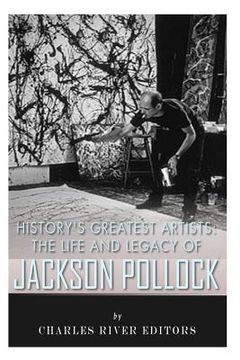Synopsis "History's Greatest Artists: The Life and Legacy of Jackson Pollock (in English)"
*Includes pictures *Includes Pollock's own quotes about his life and art *Includes online resources and a bibliography for further reading *Includes a table of contents "When I am in my painting, I'm not aware of what I'm doing. It is only after a sort of 'get acquainted' period that I see what I have been about." - Jackson Pollock In August of 1949, Life magazine famously began a lengthy article on Jackson Pollock with the headline "Is he the greatest living painter in the United States?" By that time, Pollock was already well-established in the American art world, the beneficiary of laudatory critical assessments, commercial success, and the support of the influential Peggy Guggenheim (who had helped launch his career with a major show six years earlier). However, to the relatively uninitiated readership of a middlebrow publication like Life, the article sent shockwaves, as many wondered how Jackson Pollock, whose paintings seemed abstract and sloppy to the point of resonating like the work of a young child, could possibly command any major standing within the horizon of avant-garde and modernist art. These same people no doubt wondered how his artwork could reasonably lay claim to being masterpieces with no apparent subject matter. On a psychological level, it's even possible if readers wondered how a man who looked as macho and indeed, boorish, as Jackson Pollock could really be the greatest painter America had to offer. More than 50 years later, these questions may seem a bit quaint, but they continue to reverberate for anyone accustomed to the standard that fine art be anchored in representation rather than abstraction. Hans Namuth, who was photographing Pollock working on One: No. 31, 1950, wrote of his surprise when Pollock recommenced work on a painting Namuth thought was done: "[D]ripping wet canvas covered the entire floor...There was complete silence...Pollock looked at the painting. Then, unexpectedly, he picked up can and paint brush and started to move around the canvas. It was as if he suddenly realized the painting was not finished. His movements, slow at first, gradually became faster and more dance like as he flung black, white, and rust colored paint onto the canvas. He completely forgot that Lee and I were there; he did not seem to hear the click of the camera shutter...My photography session lasted as long as he kept painting, perhaps half an hour. In all that time, Pollock did not stop. How could one keep up this level of activity? Finally, he said 'This is it.'" Naturally, Jackson Pollock's work needs to be analyzed within its social and historical context, a context that involves debates over the merits of abstract art and also critical paradigms over which kinds of art qualify as modernist. At the same time, the art was influenced by Pollock's upbringing and family situation, which were particularly significant in not only shaping his desire to become an artist but also the hypermasculine persona he cultivated. Pollock was in many respects a mysterious figure, both personally and professionally, and focusing on his private life is also essential since it could not be extricated from his professional life; his artistic career and personal life spiraled in tandem until ultimately resulting in his premature death in 1956 at the age of 44. Of course, Jackson Pollock's name has continued to surface in the art world over the past 60 years, both for the eye-catching prices his work fetches and the many forgeries that have been executed. History's Greatest Artists: The Life and Legacy of Jackson Pollock looks at the personal background that led to him becoming an artist and the cultural climate in which he rose to fame. Pollock's formal technique and artistic legacy are also analyzed, including his working methods and education. Along with pictures of important people, places, and events, you will learn about Pollock like never before, in no time at all.

